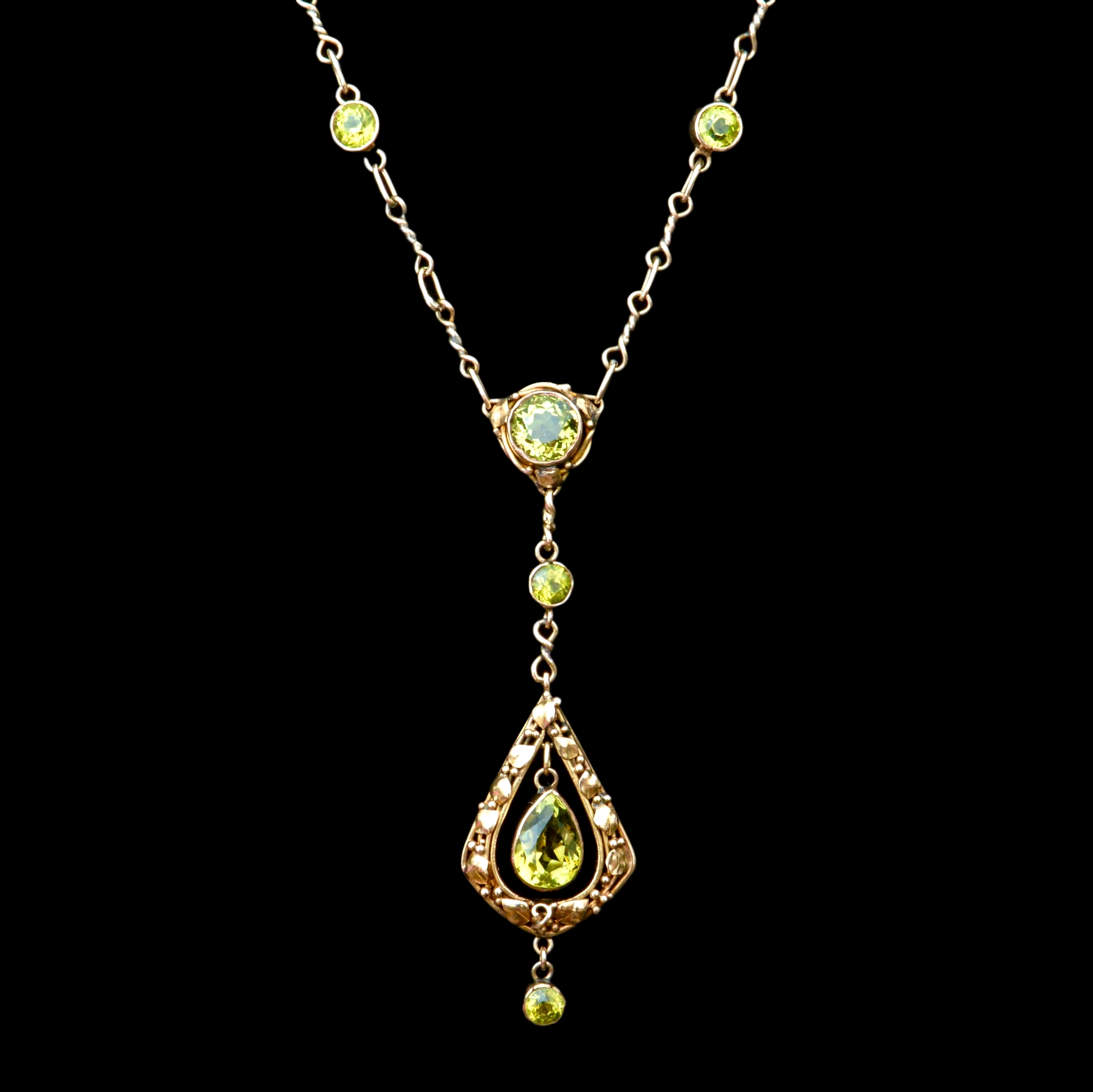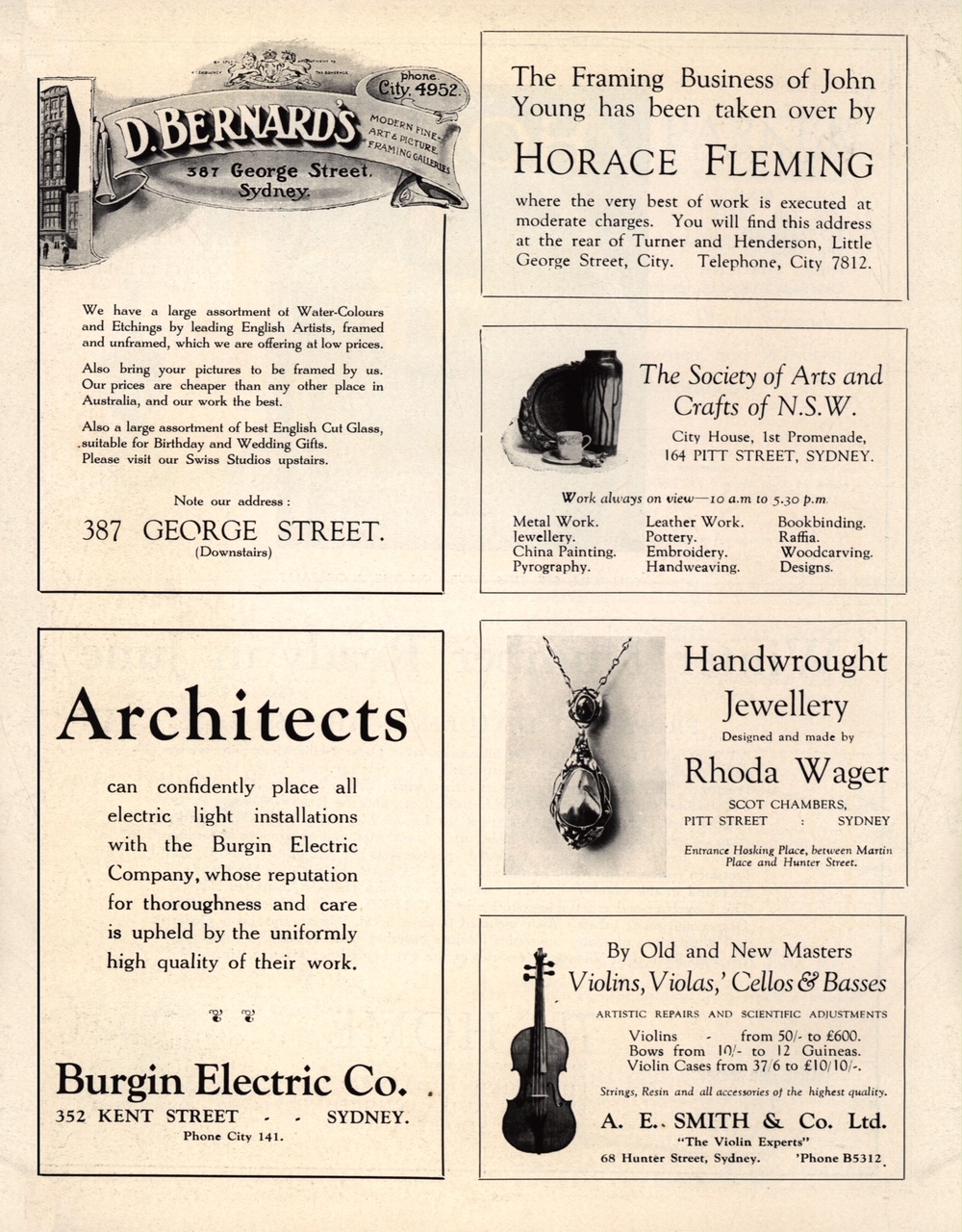Description
Courtesy of Anne Schofield
Rhoda Wager (1875-1953), jewellery designer, was born on 10 March 1875 at Mile End Old Town, London, one of five children of George Wager, warehouseman, and his wife Jane Annabella, née James. Brought up at Bristol, she attended the local art school, then studied drawing and painting at the School of Art, Glasgow (1897-1903). She exhibited metalwork and jewellery at the Glasgow Art Club in 1901 and at Cork, Ireland, next year. From 1903 she was a member of the Glasgow Society of Lady Artists and showed regularly with them. Returning to Bristol, Miss Wager taught art at St Mary’s girls’ school. She spent her holidays making jewellery under Bernard Cuzner, a talented silversmith who had designed Liberty & Co. Ltd’s ‘Cymric’ jewellery in 1899.
Late in 1913 Rhoda went to live on her brother’s sugar plantation in Fiji. Settling in Sydney in 1918, she resumed jewellery-making. On 24 January 1920 at the registrar general’s office she married a 41-year-old widower Percival George, a marine surveyor and son of Julian Rossi Ashton.
A member of the Society of Arts and Crafts of New South Wales, Rhoda Wager later joined the Melbourne and Brisbane societies, showing annually at their exhibitions. Her jewellery was displayed and sold on commission at Farmer & Co. Ltd’s city store. At 42 Martin Place, her studio had a display section which attracted clients from the Australia, Carlton and Metropole hotels. She was soon able to employ an assistant Walter Clarence Clapham and in 1928 was joined by her niece Dorothy Wager. About 1930 Rhoda moved premises to the State Office Block, Market Street, and later to Rowe Street and Victoria Arcade Chambers. She retired in 1946.
A review of her hand-wrought jewellery at the Dunster Galleries, Adelaide, in 1925, stated that her ‘work is wrought from beginning to end. Each flower, stem and leaf or berry is made separately and soldered on bit by bit’. The 170 pieces exhibited included ‘brooches with pearls, corals, black onyx and calchedony; earrings of lapis lazuli and amethysts; chains and pendants of opals and turquoise’.
Occasionally, she advertised in women’s magazines and in December 1929 her work was illustrated in Art in Australia. Rhoda’s favourite stones were opals and yellow sapphires, for they caught the sun; she used Australian motifs such as gum leaves in her foliage decoration. A tiny, silver plate bearing the name ‘Wager’ was soldered on her work when practicable. World War II restricted her to making wedding and engagement rings. Over twenty-five years she produced some twelve thousand pieces of jewellery, all meticulously recorded in her sketch-books (1921-46).
Generous, lively and witty, she was passionate about her art; strong-willed and determined, she was a clear-headed, industrious businesswoman. Moving to Queensland in 1951, Rhoda Wager died childless in Brisbane on 2 December 1953 and was cremated with Anglican rites. Her work provides a link with the English Arts and Crafts Movement, and with jewellery designers like Cuzner and Sybil Dunlop.






